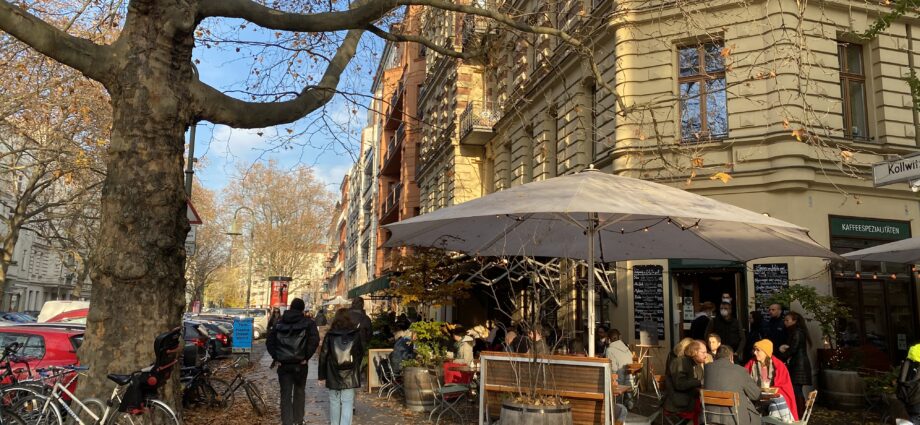“A beautiful city is a walkable city – and vice versa.“
-Peter Neumann
We have been following the mobility coverage of Berliner Zeitung’s Mobility Editor Peter Neumann for some time now and were excited to have the opportunity to interview him on his work and outlook on mobility issues over the decades in Germany’s capital city.
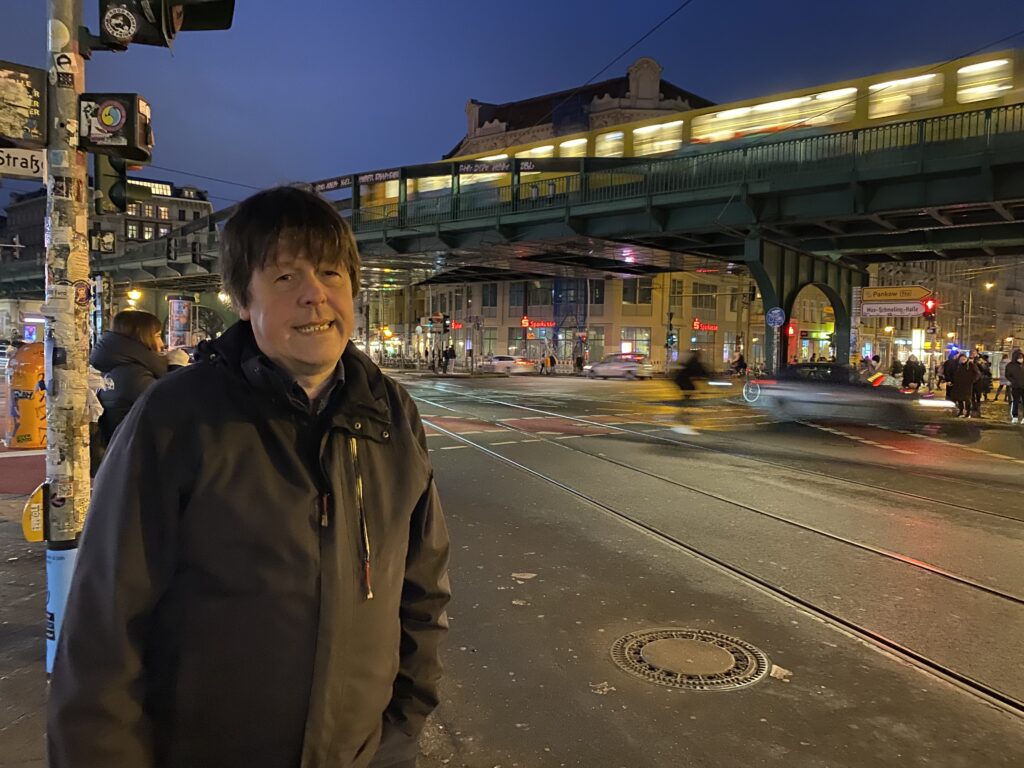
“Because parking is difficult in central Berlin, I don’t own a car here. I move on foot, by bike and public transport, which is quite good here. When my wife and I go to the countryside on the weekend, we travel by regional train and take our bikes with us.“
-Peter Neumann
Interview with Peter Neumann, Mobility Editor at Berliner Zeitung
Your main topic of coverage at Berliner Zeitung is Berlin traffic and you have been an editor at the paper since 1992. What are some of the most interesting or surprising mobility shifts you have observed during your time covering the city?
Peter Neumann: I have worked as a journalist since 1989. From the beginning, I was very interested in mobility issues. In 1992 I started to work at Berliner Zeitung, a newspaper in the capital of Germany. Since 1996 traffic has been my main topic: foot traffic, biking, public transport, cars, and air traffic. I have never felt bored, there is so much movement and there are so many interesting people to meet and to interview.
The most obvious shift is that of biking, which in the past was something for a few hardy people, but is now widely accepted as a means of urban transport that has to be promoted and facilitated. Of course, there is still a lot of criticism by bike advocates that conditions are not improving fast enough, but you find many more bike lanes in Berlin now than in the past.
But there are also some other observations – especially that behavior hasn’t changed. Car is still king for many people, and even though some rail tracks have been (re)built and public transport in the capital region has been further improved, many Berliners and Brandenburgers don’t even think of taking the S-Bahn or regional train.
Worse, a lot of people still have traditional opinions: We need more streets and roads, one more lane will fix it, cyclists shouldn’t use main roads and so on. And, of course: “What do I have to do with climate change? Nothing.”
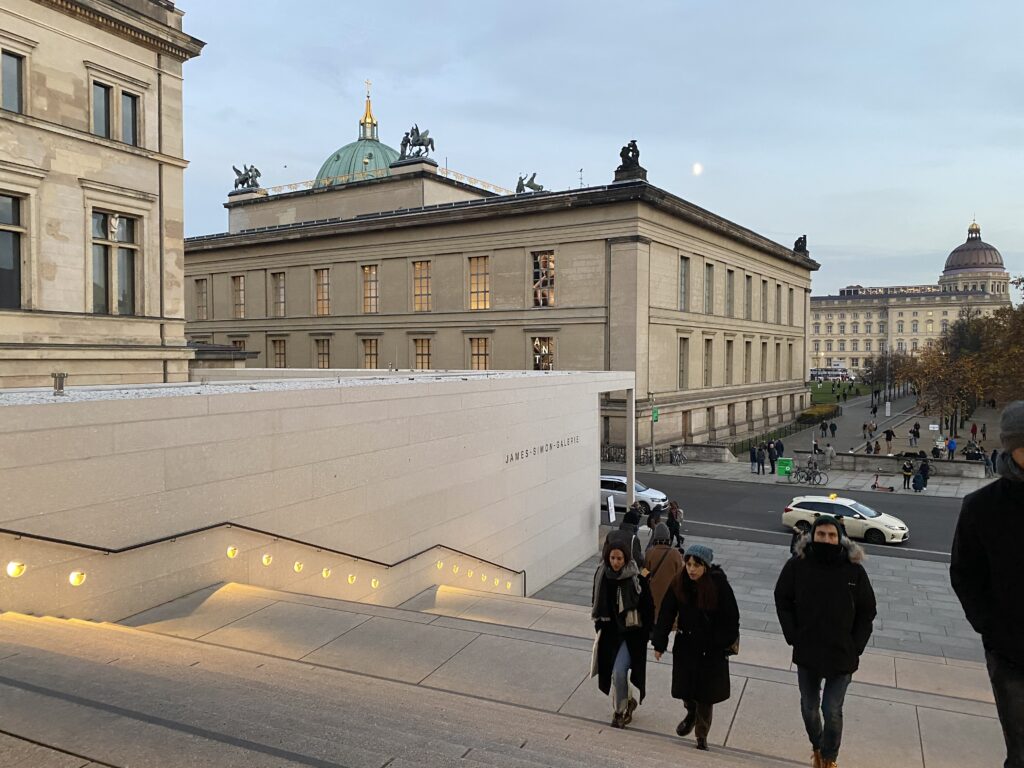
Photo Courtesy of Peter Neumann
I come from Osnabrück, an industrial city in northwest Germany with 165,000 inhabitants currently. Even as a child my parents allowed me to roam the city and its surroundings freely by bike and public transport. This was very important to me and I am very grateful for that! I discovered that I can go nearly everywhere on my own and that I can put trust in the public transport system. By 15 years old I was allowed to travel on my own abroad by train, and during that journey I also didn’t experience any problems. When I was 18, I moved to West-Berlin to study journalism (later also politics and public law). In Berlin you don’t need a private car, but in the 1980s the conditions for biking were discouraging. Since I was 19 years old, I have had a driver’s license. Sometimes I like to drive a car, but that happens nearly only when I’m on vacation abroad. Because parking is difficult in central Berlin, I don’t own a car here. I move on foot, by bike and public transport, which is quite good here. When my wife and I go to the countryside on the weekend, we travel by regional train and take our bikes with us. Easy, although it can be crowded!
-Peter Neumann on his background
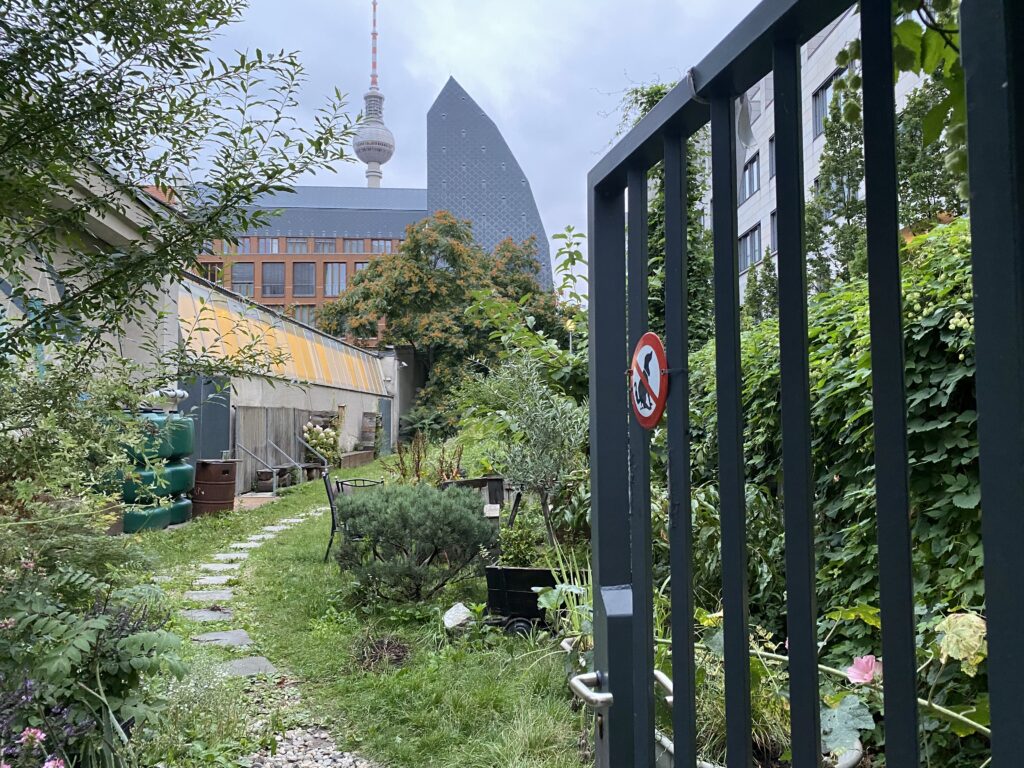
Urban garden in the Am Krögel street with the East Berlin TV tower in the background (Photo courtesy of Peter Neumann)
What have been some of the most contentious traffic related topics during your time as an editor?
Peter Neumann: Although progress is still slow, many car owners have realized that street space is being taken away from them. The ascent of the first Berlin “pop up bike lanes” (provisionally bike lanes, which were built at the beginning of the corona pandemic 2020) stirred a lot of anger. When main streets only have one car lane in each direction left, when parking lots are turned into parklets, car owners don’t think about climate change or a sustainable city. In many cases their reaction is aggressive. But street space is also an issue for cyclists and pedestrians. It is a struggle that is getting fiercer every year.
Another controversial issue is the new Berlin Brandenburg airport BER. Many people are angry because it was opened nearly a decade late and when it was opened in 2020 it had cost the taxpayers more than 6 billion Euro (until now) and still isn’t working properly.
What role do you perceive media as having in covering issues of mobility, in particular those that are quite controversial?
Peter Neumann: As a journalist I have the obligation to cover what is going on in the city, to use as many sources as I can, and to listen to all sides in a conflict. We are not a cyclist’s or pedestrian’s magazine. As a general interest regional newspaper I see our goal as to cover all parts of society. The aim is to provide facts, arguments and commentary so that the readers get the whole picture and can form a reasonable opinion. I know, this sounds very old-fashioned, but the discussion in the so-called social media often lacks mutual understanding and is way too aggressive. Sometimes it can be valuable and interesting to know what the other side thinks.
“Car is still king for many people, and even though some rail tracks have been (re)built and public transport in the capital region has been further improved, many Berliners and Brandenburgers don’t even think of taking the S-Bahn or regional train.“
-Peter Neumann
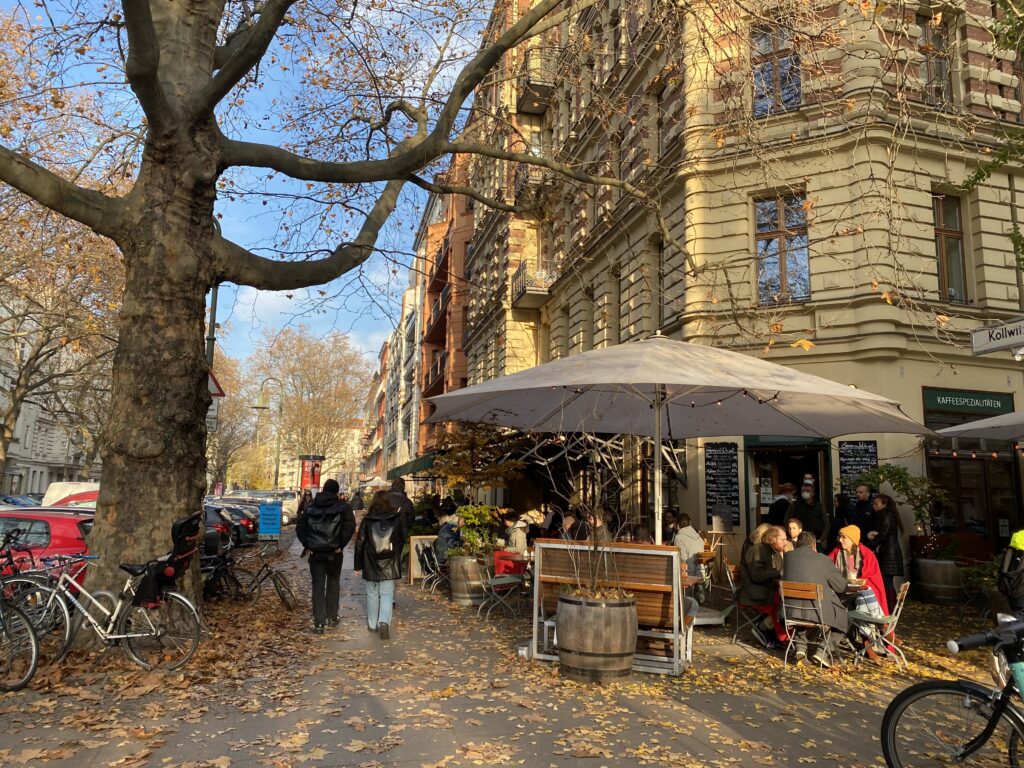
Photo (courtesy of Peter Neumann) of Kollwitzstraße in Berlin Prenzlauer Berg
How does your own perspective on what would be beneficial in terms of mobility shifts in the capital affect your journalism?
Peter Neumann: Shifts and changes are my daily bread. So I am very interested in detecting new things, initiatives, opinions, people who are doing something interesting and valuable. I think that I am open to even some radical moves like the planned referendum for a (nearly) car-free inner city of Berlin. But still, I always try to mirror things by talking to people who have a completely different opinion.
There are some specific German mobility terms we would like to ask you about and explore. First- Mobilitätswende. Can you share a bit about this term?
Peter Neumann: Mobilitätswende – to turn mobility into another direction. Towards sustainability, people-friendly cities, a different distribution of street space, fewer accidents and road deaths. Mobility is not only traffic in terms of moving from A to B. It also can be about cultural change: preventing traffic or do without traffic – e.g. don’t use inland flights, don’t move to suburbia.
“I moved to Berlin in 1981 and really like living here. It’s a lively city with a lot of things going on. Sometimes it can be a little bit rough around the edges, but the countryside around Berlin is is full of empty forests and lakes so it’s easy to get away to relax, so you can gain strength again to withstand the hustle and bustle of this metropolis.“
-Peter neumann on life in berlin
Can you explain the concept of Verkehrswende?
Peter Neumann: Verkehr is traffic in English. This is more focused on moving from A to B – and that this should be done in a way that doesn’t harm people, nature, cities. It means that walking and cycling have to be promoted and that taking the train is a friendly way to cover longer distances.
Lastly, can you also explain Antriebswende?
Peter Neumann: The German word Antrieb can be translated as propulsion or maybe engine. Change from internal combustion engines to battery and hydrogen engines. Electric cars have some advantages, and because their range still is not too great, they can encourage using other means of transport on longer distances. But they also occupy space in the streets, and of course, you can also be killed by an electric vehicle.
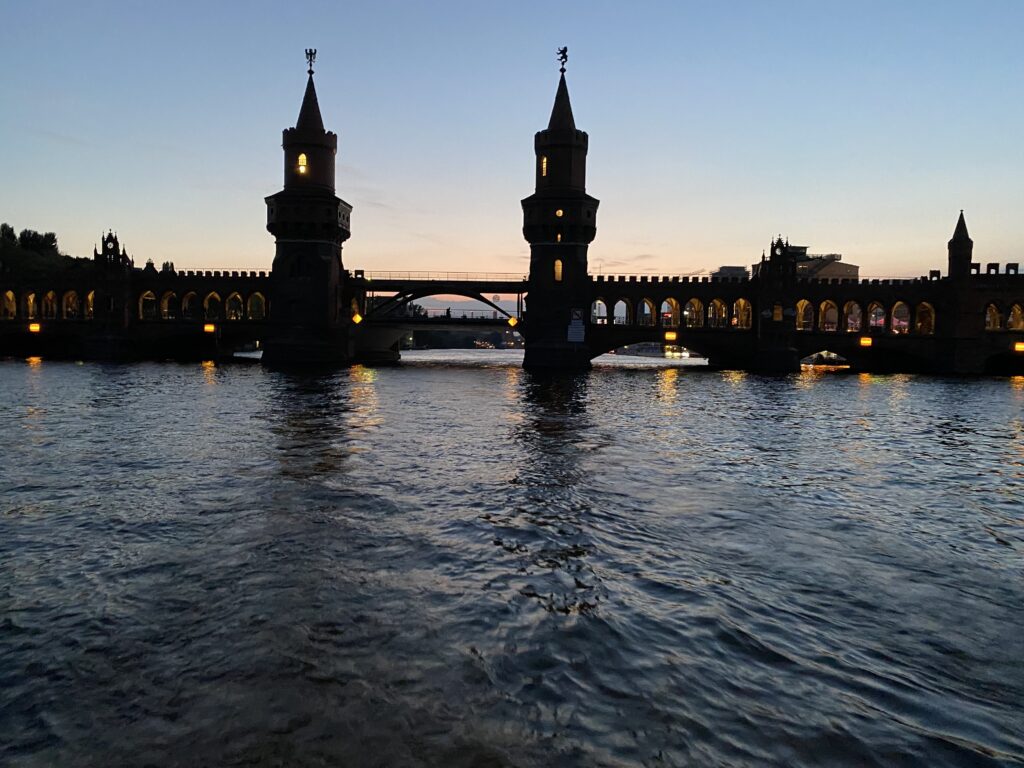
(Photo Courtesy of Peter Neumann)
What are your favorite public spaces and streets to walk in Berlin?
Peter Neumann: As a relatively new city, Berlin doesn’t have the narrow streets and sidewalks of a medieval city. Although the sidewalks are often invaded by cars and bicycles, pedestrians in many cases have more space than elsewhere.
Berlin is a city of strollers/flaneurs where nearly one-third of all movements are made on foot. It can be fun to walk through the inner city districts of Mitte, Kreuzberg, Friedrichshain and Prenzlauer Berg, e.g. Bergmannstraße, Boxhagener Straße, Kollwitzplatz.
For a Sunday walk or hike I recommend the great open space of Tempelhofer Feld (the former Tempelhof airport which was closed in 2008 and where a referendum prevents building houses). The Stralau peninsula in the Eastern part of Berlin, where you also see wide open (water) spaces and even a village church from 1464. Not to forget the grand Havel river walk from Berlin-Wannsee to Potsdam-Babelsberg, right through Prussian heritage.
What are your preferred modes of moving around Berlin?
Peter Neumann: Walking, biking, public transport. Sometimes (but quite rarely) taxi. You don’t need more.
Public transit options in Berlin are diverse – what is your preferred mode of public transit?
Peter Neumann: Light rail (tram, streetcar), because you see a lot of the city. But in most cases I see this topic very pragmatically: the faster a connection, the better.
“When main streets only have one car lane in each direction left, when parking lots are turned into parklets, car owners don’t think about climate change or a sustainable city. In many cases their reaction is aggressive. But street space is also an issue for cyclists and pedestrians. It is a struggle that is getting fiercer every year.“
-Peter Neumann
How do you think the city can improve its public transit service?
Peter Neumann: Build more light rail tracks, especially in and to the western part of Berlin. In 1967 the last tram line of West Berlin was closed, and since unification in 1990 only a few new tracks reach into this part of town. (Re)Build train lines to the suburbs in Brandenburg. There are still some connections that have been severed when the former German Democratic Republic closed its borders and the Berlin Wall was built in 1961 – and still not being rebuilt.
How do you think the city can improve on walkability?
Peter Neumann: Make sure that sidewalks are not used as parking spaces or as racetracks for cyclists. More crosswalks. More benches. More trees. A beautiful city is a walkable city – and vice versa.
*This article was translated by Ingmar Arnold of Berliner Unterwelten and published in Issue 4-2021 + 1-2022 of ‘Schattenwelt’

Follow Peter Neumann’s coverage on mobility in Berlin at: https://www.berliner-zeitung.de/autoren/peter-neumann

